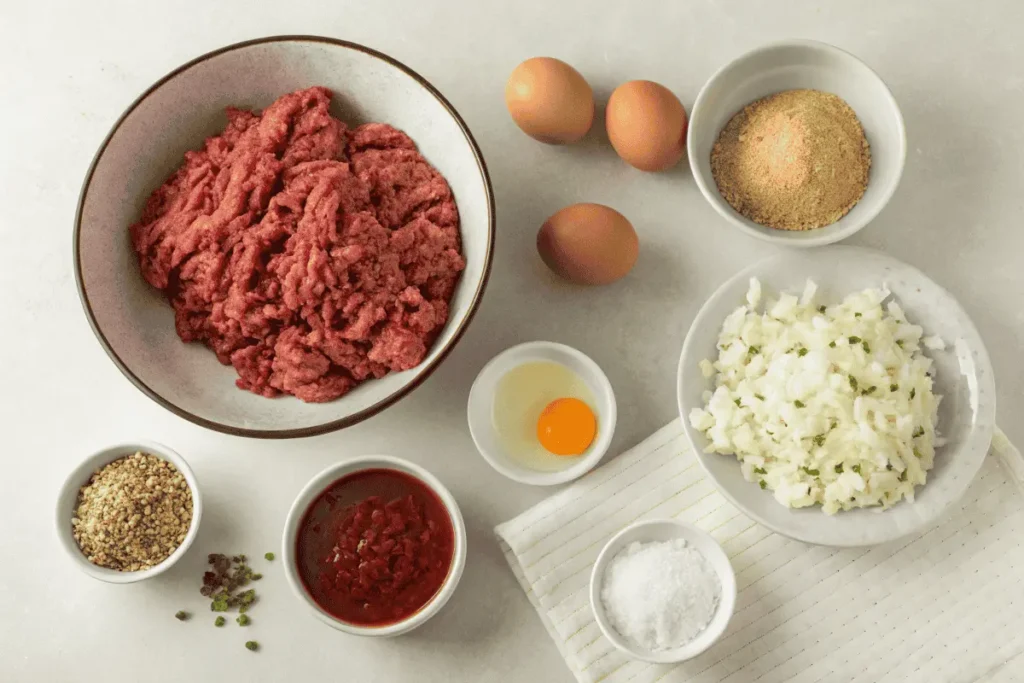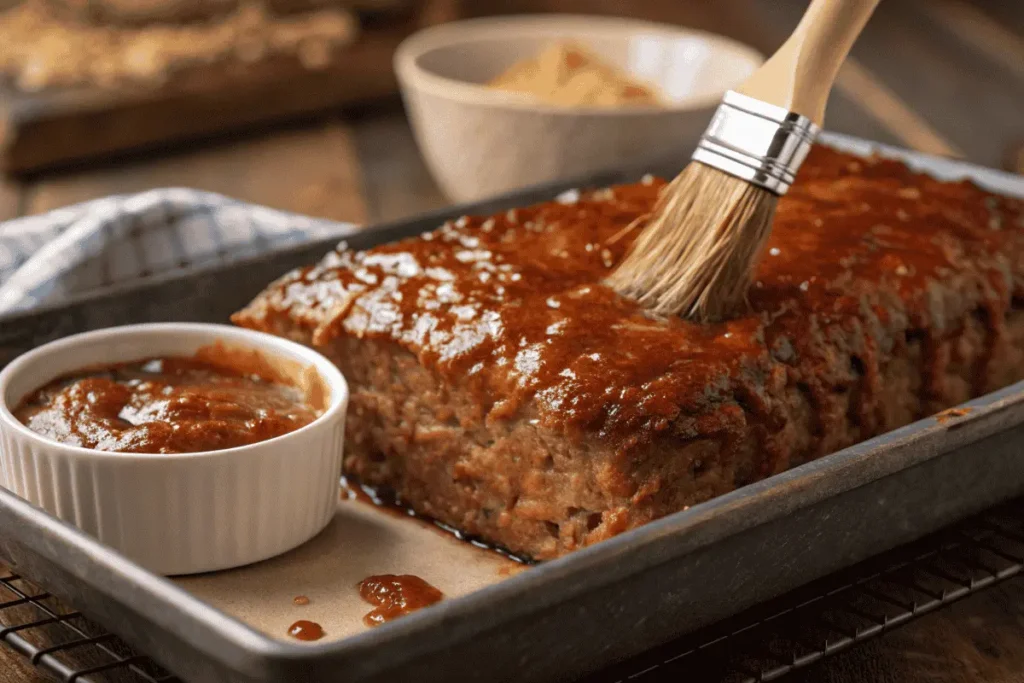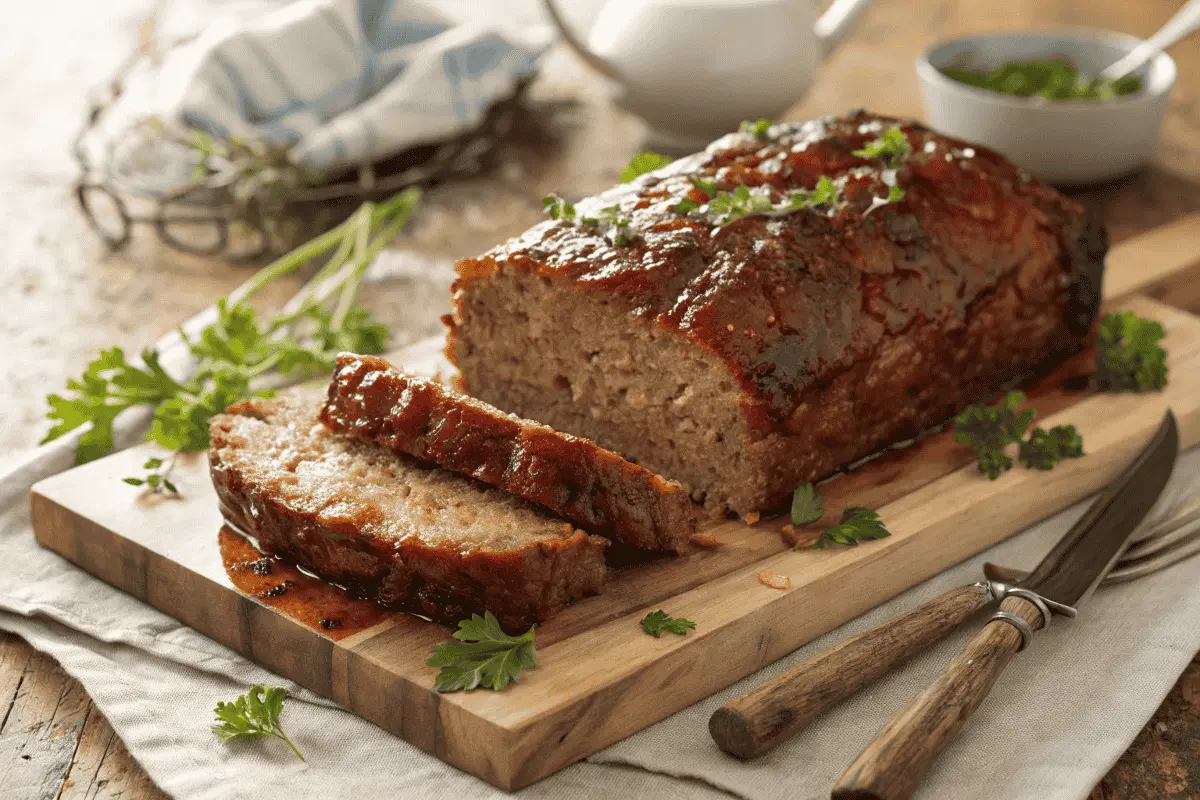How to Make Meatloaf Recipe, Meatloaf is more than just a dish it’s a nostalgic connection to home-cooked meals, warmth, and family gatherings. This timeless comfort food has graced dinner tables for generations, offering a hearty and satisfying option for any occasion. Whether you’re a seasoned chef or a beginner in the kitchen, mastering the art of meatloaf is a skill worth having.
In this guide, we’ll delve into the history, versatility, and preparation techniques for making the perfect meatloaf every time.
Why Meatloaf is a Timeless Dish
The Origins of Meatloaf as a Family Favorite
The roots of meatloaf stretch back to ancient culinary traditions, where cooks combined ground meat with bread or grains to stretch resources and enhance flavor. Over time, this practice evolved, with the modern version gaining popularity in the United States during the Great Depression as an economical and filling meal.
Its customizable nature has solidified its place in households worldwide. From simple, classic recipes to modern twists, meatloaf remains a dish that brings comfort and familiarity.
The Versatility of Meatloaf Recipes
One of the key reasons meatloaf has stood the test of time is its adaptability. Whether you’re catering to picky eaters, dietary restrictions, or adventurous palates, there’s a meatloaf variation for everyone. You can incorporate different meats, vegetables, seasonings, and even cheeses to suit your taste or the ingredients you have on hand.
Ingredients for a Classic Meatloaf Recipe
Core Ingredients (Ground Meat, Eggs, Breadcrumbs, Onion)
The foundation of any meatloaf starts with these essential components:
- Ground meat: Typically beef, pork, turkey, or a blend.
- Eggs: Act as a binder to hold the mixture together.
- Breadcrumbs: Add structure and prevent the loaf from becoming too dense.
- Onion: Provides a flavorful base and moisture.

Seasonings and Flavor Enhancers
To elevate the taste, incorporate seasonings like salt, pepper, garlic powder, and paprika. For a deeper flavor, consider adding:
- Worcestershire sauce
- Dijon mustard
- Fresh herbs like parsley or thyme
These elements transform a basic meatloaf into a dish bursting with savory goodness.
Choosing the Right Meat for Meatloaf
Ground Beef, Turkey, or a Blend
Selecting the right meat is crucial for achieving the ideal texture and flavor. Each type of meat offers unique qualities:
- Ground beef: Rich and hearty, ideal for a classic taste.
- Turkey: A leaner option that’s great for lighter meals.
- Blends: Combine meats for a balanced texture and flavor profile.
Fat Content and How It Affects Texture
For the juiciest results, choose meat with moderate fat content. Aim for 80/20 ground beef (80% lean, 20% fat). Leaner options, like ground turkey, may require added moisture from ingredients like sautéed onions or ketchup to avoid dryness.
Tools You’ll Need
Mixing Bowls, Loaf Pan, and Meat Thermometer
Having the right tools on hand can streamline the process and ensure consistent results:
- Mixing bowls: Essential for combining ingredients without overworking the meat.
- Loaf pan: Provides structure for a uniform shape, but you can also free-form the loaf for a rustic look.
- Meat thermometer: Guarantees accurate cooking by checking the internal temperature (160°F for meatloaf).
Preparing the Meat Mixture
Combining Meat, Binder, and Seasonings
The key to a tender and flavorful meatloaf lies in the way you mix the ingredients. Follow these steps:
- Start with your base ingredients: Combine ground meat, breadcrumbs, and eggs in a large mixing bowl.
- Add your aromatics: Mix in finely chopped onions, garlic, or sautéed vegetables for depth of flavor.
- Incorporate seasonings: Add salt, pepper, and any additional spices or sauces such as Worcestershire sauce or Dijon mustard.
Pro Tip: Avoid overmixing, as it can make the meatloaf dense and tough. Use a gentle folding motion until everything is just combined.
Tips for Avoiding a Dense Meatloaf
- Hydration is key: Add a splash of milk or broth to the mixture to keep it moist.
- Don’t compress the mixture: When shaping, avoid packing the meat too tightly.
- Use fresh breadcrumbs: They create a softer texture compared to dry, store-bought crumbs.
Shaping and Baking the Meatloaf
Forming the Meatloaf (In a Pan or Free-Form)
Decide between two shaping methods:
- Loaf pan: Provides a neat, compact shape and even cooking.
- Free-form: Allows the fat to drain away and creates a rustic appearance.
Place the shaped loaf on a lined baking sheet or in a lightly greased loaf pan.
Preheating the Oven and Ideal Baking Temperature
- Preheat your oven to 350°F (175°C): This temperature ensures slow, even cooking without drying out the meat.
- Position the rack: Place the meatloaf on the middle rack to allow for even heat distribution.
Bake for approximately 45-60 minutes, depending on the size and shape of your loaf.
Adding the Glaze
Ingredients for a Sweet and Tangy Glaze

A good glaze takes meatloaf from tasty to extraordinary. Combine:
- Ketchup or tomato paste
- Brown sugar or honey for sweetness
- Mustard or vinegar for tanginess
- Optional: A dash of hot sauce for a slight kick
Mix these ingredients in a small bowl until smooth.
Timing for Applying the Glaze During Baking
- Halfway through baking: Brush a layer of glaze on top to allow it to caramelize.
- In the final 10 minutes: Apply a second coat for a glossy, flavorful finish.
This dual-application method creates a perfectly balanced glaze that’s neither too sticky nor overpowering.
Checking for Doneness
Internal Temperature for Perfectly Cooked Meatloaf (160°F)
Using a meat thermometer is the most reliable way to ensure your meatloaf is cooked through. Insert it into the thickest part of the loaf:
- 160°F (71°C): Safe and ideal temperature for a moist and fully cooked meatloaf.
- If undercooked, return to the oven and check again in 5-10 minutes.
Resting the Meatloaf for Juiciness
Let the meatloaf rest for at least 10 minutes after removing it from the oven. This step allows the juices to redistribute, preventing them from spilling out when sliced.
Pro Tip: Tent the loaf with aluminum foil to retain heat during the resting period.
Meatloaf Recipe Variations
Adding Vegetables (Bell Peppers, Mushrooms, Carrots)
Enhance your meatloaf with nutritious and flavorful vegetables:
- Bell peppers: Add sweetness and color. Finely dice to avoid altering the loaf’s texture.
- Mushrooms: Provide a savory, umami boost. Sauté beforehand to remove excess moisture.
- Carrots: Grate or finely chop for a subtle sweetness and added moisture.
These additions make your meatloaf healthier without compromising on taste.
Italian-Style Meatloaf with Mozzarella and Marinara Sauce
For a Mediterranean twist, try this variation:
- Use a mix of ground beef and Italian sausage.
- Season with garlic, oregano, and parsley.
- Incorporate shredded mozzarella cheese in the center of the loaf for a gooey surprise.
- Top with marinara sauce instead of a glaze during the final 15 minutes of baking.
Pair with pasta or a side salad for a complete Italian-inspired meal.
Keto-Friendly Meatloaf recipe with Almond Flour
To make a low-carb version, replace breadcrumbs with almond flour. Additional tips:
- Use ground turkey or beef for a lean base.
- Incorporate grated Parmesan for added flavor and richness.
- Serve with cauliflower mash or roasted vegetables.
This keto-friendly option is perfect for those following a low-carb diet without sacrificing flavor.
Serving Suggestions for Meatloaf
Pairing with Classic Sides (Mashed Potatoes, Green Beans, Salad)
Meatloaf pairs beautifully with a variety of sides:
- Mashed potatoes: A creamy, buttery companion to balance the savory loaf.
- Green beans: Add freshness and crunch, either steamed or sautéed with garlic.
- Mixed salad: Lighten the meal with greens, cherry tomatoes, and a tangy vinaigrette.
These combinations create a well-rounded, satisfying meal.
Turning Leftovers into Sandwiches or Wraps
Leftover meatloaf is just as versatile:
- Sandwiches: Slice cold meatloaf and layer it between toasted bread with lettuce, tomato, and mayo.
- Wraps: Roll meatloaf slices with tortillas, shredded cheese, and a dollop of salsa for a quick, portable meal.
These options give new life to your leftovers, making them as exciting as the original dish.
Storing and Reheating Meatloaf
How to Store in the Refrigerator or Freezer
Proper storage ensures your meatloaf stays fresh:
- Refrigerator: Store in an airtight container for up to 3-4 days.
- Freezer: Wrap tightly in plastic wrap and aluminum foil or use a freezer-safe container. Meatloaf can last up to 3 months frozen.
Label the container with the date to keep track of freshness.
Best Reheating Methods for Moist Meatloaf
Reheating can often dry out meatloaf, but these methods retain moisture:
- Oven: Cover slices with foil and bake at 325°F (165°C) for 15-20 minutes.
- Microwave: Place a damp paper towel over the slice to trap steam and heat on medium power.
- Skillet: Heat slices in a covered skillet over low heat with a splash of broth or water.
These techniques ensure your reheated meatloaf is as juicy and flavorful as when it was first baked.
For more ideas on customizing recipes, check out Smoked Beef Recipes
Frequently Asked Questions (FAQs)
1. How Do I Keep My Meatloaf from Falling Apart?
Ensure your meatloaf holds together by:
- Using the right ratio of meat to binder (breadcrumbs and eggs).
- Avoiding overmixing.
- Letting it rest after cooking.
2. Can I Make Meatloaf Ahead of Time?
Yes! Prepare the meat mixture, shape it, and store it in the refrigerator for up to 24 hours. Bake it when ready.
3. What Can I Use Instead of Breadcrumbs?
Try oats, crushed crackers, or almond flour as substitutes.
4. Why Is My Meatloaf Dry?
Dryness can result from using lean meat or overbaking. Add moisture with sautéed vegetables or a glaze.
5. How Long Should I Bake Meatloaf?
Bake at 350°F (175°C) for 45-60 minutes, or until the internal temperature reaches 160°F.
6. Can I Freeze Unbaked Meatloaf?
Yes, wrap it tightly and freeze for up to 3 months. Thaw in the refrigerator before baking.
7. What’s the Best Meat for Meatloaf?
Ground beef (80/20) is the most popular, but blends with pork or turkey are also excellent.
8. Can I Add Cheese to Meatloaf?
Absolutely! Add shredded cheese to the mixture or a cheese filling for extra flavor.
9. Should I Cover Meatloaf While Baking?
Cover with foil for the first half of baking to retain moisture, then uncover to let the glaze caramelize.
10. How Do I Know When Meatloaf Is Done?
Use a meat thermometer to check the internal temperature—160°F is perfect for a fully cooked loaf.

